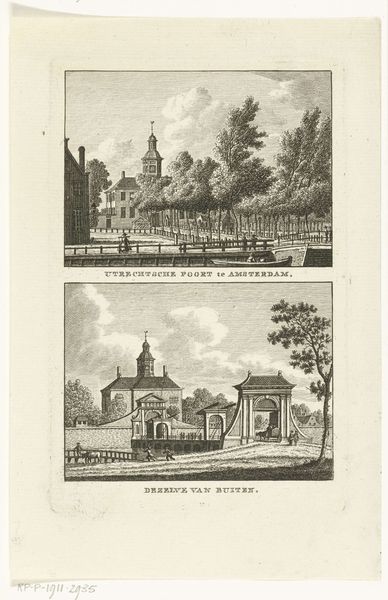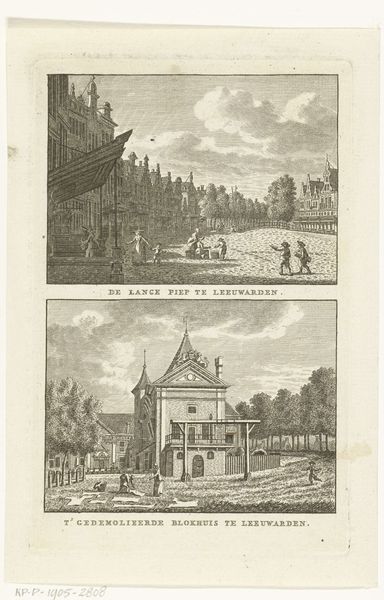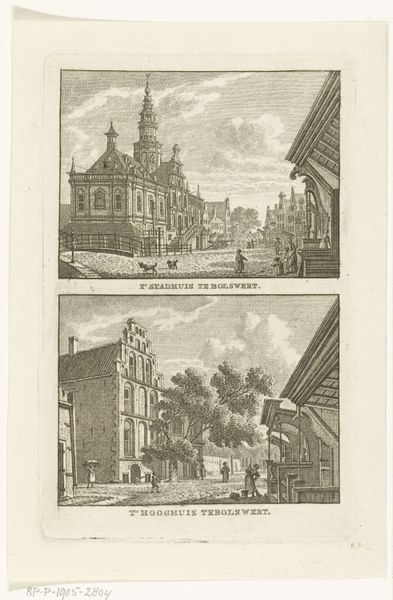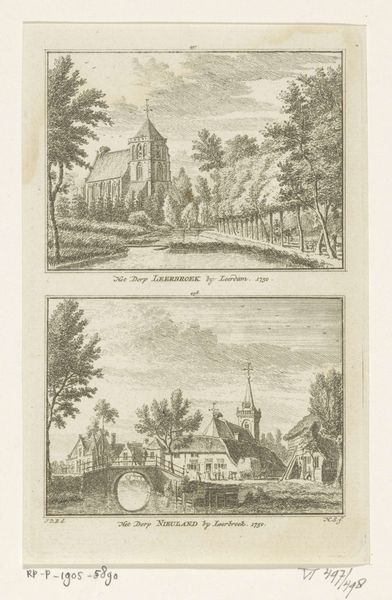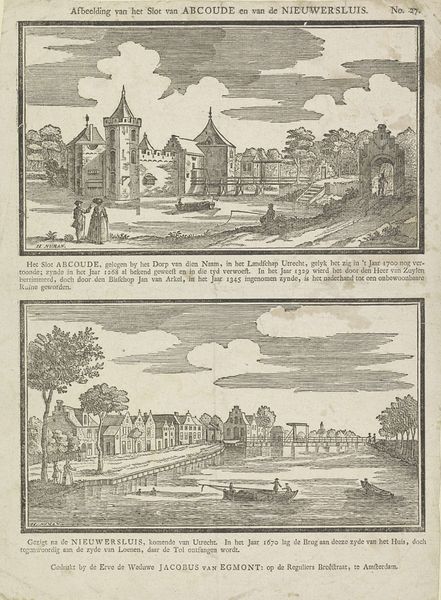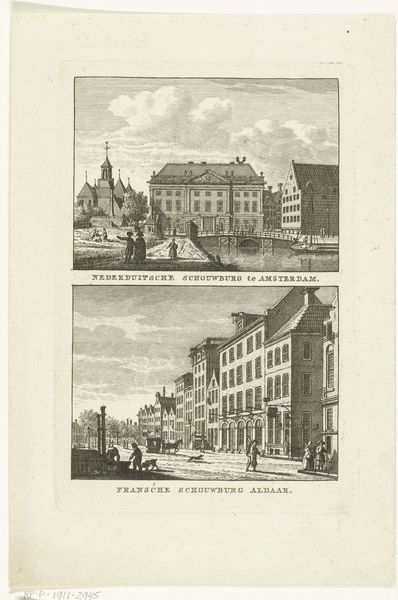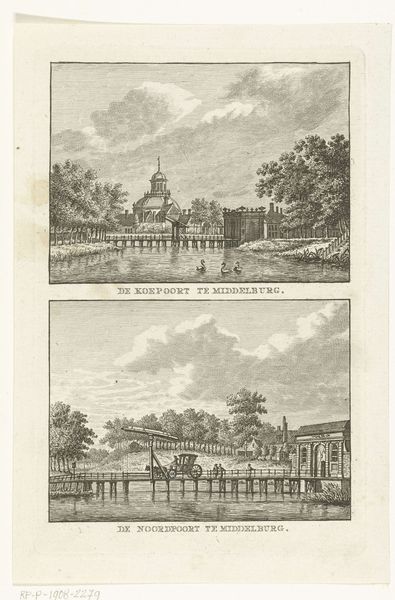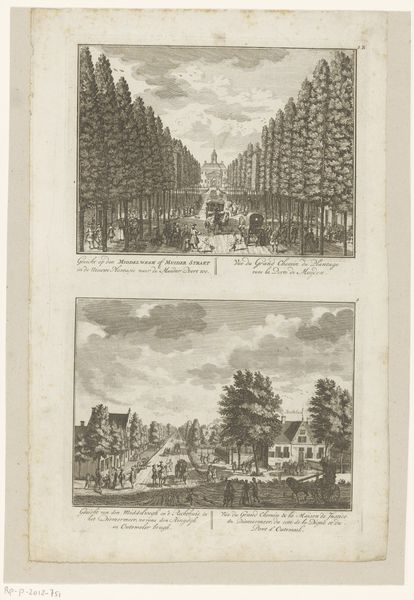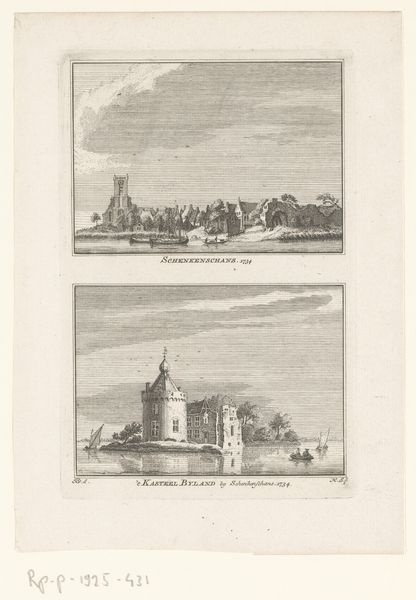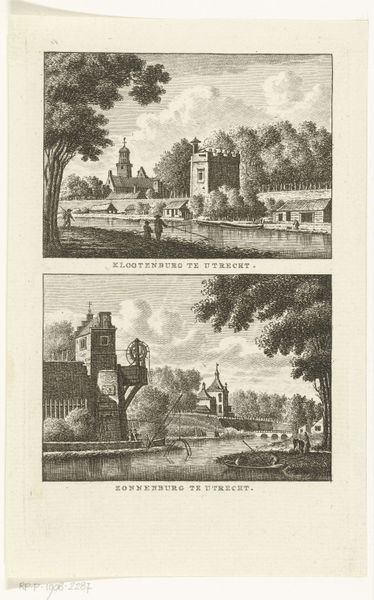
Twee stadsgezichten te Middelburg: Seispoort en Vlissingsepoort 1786 - 1792
0:00
0:00
carelfrederikibendorp
Rijksmuseum
drawing, print, etching, engraving
#
drawing
#
dutch-golden-age
# print
#
pen illustration
#
etching
#
old engraving style
#
landscape
#
cityscape
#
engraving
#
realism
Dimensions: height 168 mm, width 108 mm
Copyright: Rijks Museum: Open Domain
Curator: Looking at this engraving, it presents two cityscapes of Middelburg: the Seispoort and the Vlissingsepoort, created between 1786 and 1792 by Carel Frederik Bendorp. What strikes you most about it? Editor: Immediately, a sense of serene formality comes to mind. The sharp lines and symmetry speak of a composed, almost idealized vision of urban life. But there’s also a curious detachment, like viewing a stage set. Curator: That detachment, I think, speaks volumes about the period and its relationship with urban space. Consider the Dutch Golden Age legacy; these weren't merely depictions, but assertions of civic pride and the control of space, projecting power through precise lines. These city gates acted as both physical and symbolic thresholds. Editor: I'm intrigued by how Bendorp uses the light. In the upper image, notice how the tree foliage filters the sun, creating an almost ethereal glow over the Seispoort. Trees are a common symbolic form, referencing growth and transformation, isn't that right? The sharp contrast in the lower Vlissingsepoort view frames the city’s activity around trade routes. Curator: Absolutely! The artist skillfully employs linear precision with those familiar tropes to create order and to subtly hint at the cultural value imbued in the cityscape. What does this tell us? Middelburg sought to project stability through this iconography during a period marked by shifts in European power dynamics. Editor: I see your point. But what about the inclusion of windmills in the lower section, "Vlissingsepoort"? It feels like the artist made an appeal to progress and its integration into nature to create a connection to both economic dynamism and the picturesque landscape. Curator: The presence of those windmills underscores the Dutch embrace of technology, essential to trade and survival, seamlessly woven into daily life and visual culture. They go far beyond the practical – windmills also carry allegorical connections to national identity. They signal prosperity but also allude to hard work and ingenuity as cultural values. Editor: Looking closer, I note that the social elements are subtle, the figures placed more as scenic accents rather than being central to the scene. It reveals an interesting focus: an emphasis not on human drama, but the built environment as a stage, a fixed structure in human actions. Curator: The relative insignificance of those individuals enhances that reading. People merely punctuate the landscape rather than animate it, again returning our focus to the strength and permanence the gates represented, as a physical display of cultural values etched into the city. Editor: So, these serene cityscapes, while seemingly objective, were in fact loaded images crafted to uphold cultural and political values. The calm belies an assertive projection of stability in the face of historical change. Curator: Precisely. Art as a form of quiet propaganda, carefully composed, layered with symbolic meaning for those with the eyes to see.
Comments
No comments
Be the first to comment and join the conversation on the ultimate creative platform.
